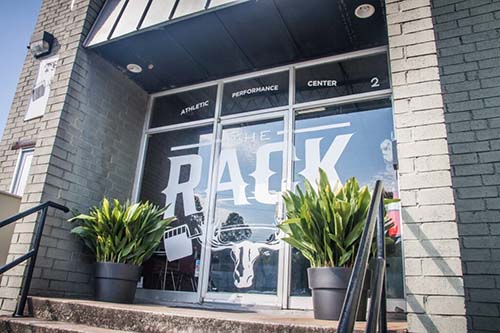5 Ways To Increase Your Vertical Jump

Here are my top 5 ways to increase the vertical jump. There are other ways you can raise an athlete’s vertical jump, but in my opinion these will do it the fastest and the most efficiently.
1. Box Squatting:
-The reason I have this one first is because many athletes need to raise their maximal & sub maximal strength, and this is where the squat comes into play. When we use the box, which is superior to the free squat, we can break up the eccentric/concentric portions of movement, making it tougher and safer on the knees. This will also be SPP for many sports such as football where there are long counts, or basketball when a player is waiting to get the rebound on the free throw line.
2. Resistance Jumping:
-For explosive strength there is nothing superior to jumping, more specifically resistance jumping. The body will quickly adapt to your body weight and this is where resistance jumping comes into play. My athletes will often break a jump record when they do a heavy light method, where they do a jump with weight and then take off the weight and perform the jump again.
Types of resistance jumping:
A). Box jumping: Seated, no step, static jump, 1 step, 5-10 yrd running jump, single leg, split box jump, sideways jump.
B). Off the knees: can be done for max weight on predetermined height or for max height.
C). Just Jump Mat: no step, 1 step, from a depth jump, repeated jumps up to 4.
D). Hurdle jumps: no step, 1 step, 5-10 yrd running
E). Broad Jump: 2 feet, single leg, sideways into forward, off knees into broad, seated into broad, depth jump into broad.
F). Depth Jump: stick the landing, onto vert mat into vertical, land into broad jump, land and jump onto box
G). Bounding: straight leg, bent, small or big hurdles, single leg.
*All of these can be done with or a combination of- ankle weights, dumbbells, barbells weight vest med ball etc.
3. Sumo Deadlifting:
-For maximal strength and sub maximal strength the sumo deadlift is second to the box squat, especially for athletic performance. Due to the nature of the stance with the feet turned out and the wide stance the athlete will be producing a tremendous amount of force laterally which is extremely important for team sports where lateral speed is important. The reason why it also impacts the vertical so much is due to the fact that it works the glutes and hamstrings much more than a conventional deadlift would but has much less lower back involvement therefore, less likely for athletes to have a sore back or suffer an injury.
4. Reverse Hyper:
-With my athletes at the minimum they do hypers once a week but typically we do twice a week; 3-5 sets of 10-30+ reps. The low back is often very weak on athletes and the general population, it’s often overlooked just like neck work but most people still deal with pain in these two areas. Why is this? Simple, that area is weak because it has never been worked. Strong spinal erectors will enable the athlete to stay more upright while running and jumping as well as staying healthy.
Some variations:
-single Leg
-strap
-roller attachment
-tilted down, flat, up
-heavy for low reps
-light for high reps
-iso holds at the top for .15-.30-.45-1min+
-slow eccentric, concentric
-feet together, feet apart
5. ATP (Athletic Training Platform):
-In the ATP or Belt squat machine, I have my athletes perform a lot of marching or straight leg kicking style for time. We typically do this once a week but sometimes twice a week. Depending on if the athlete needs more strength or strength endurance will decide how long they march for. The less the time they walk the heavier the weight on the carriage. We do 2-4 sets of .45 sec-3min+ depending on the sport.
Some Variations:
-straight leg
-high knee marching
-face out and grapple with a partner for fighters
-face out and dribble basketball
-running in place
-rack pull for time while belt is pulling down
-stand in 1⁄2-3⁄4 squat to work isometrics for time
Honorable Mention: Inverse Curl
-the number one way to strengthen the hamstrings and the best way to progress an athlete to not only doing nordic curls but nordic curls with weight.
Kalil Sherrod
-Westside Barbell Personal Training and Athletic Coaching Certified
-Byrd Sports Performance Certified Coach


